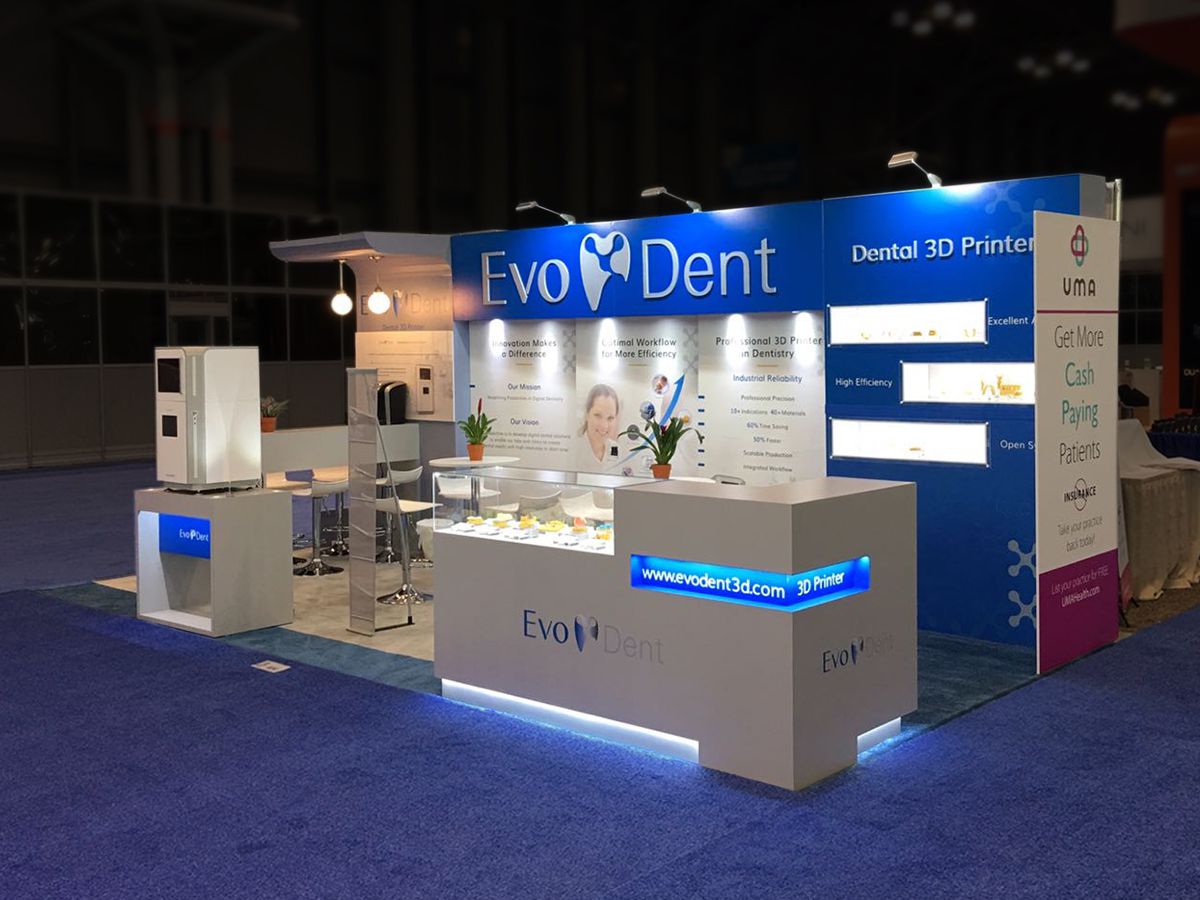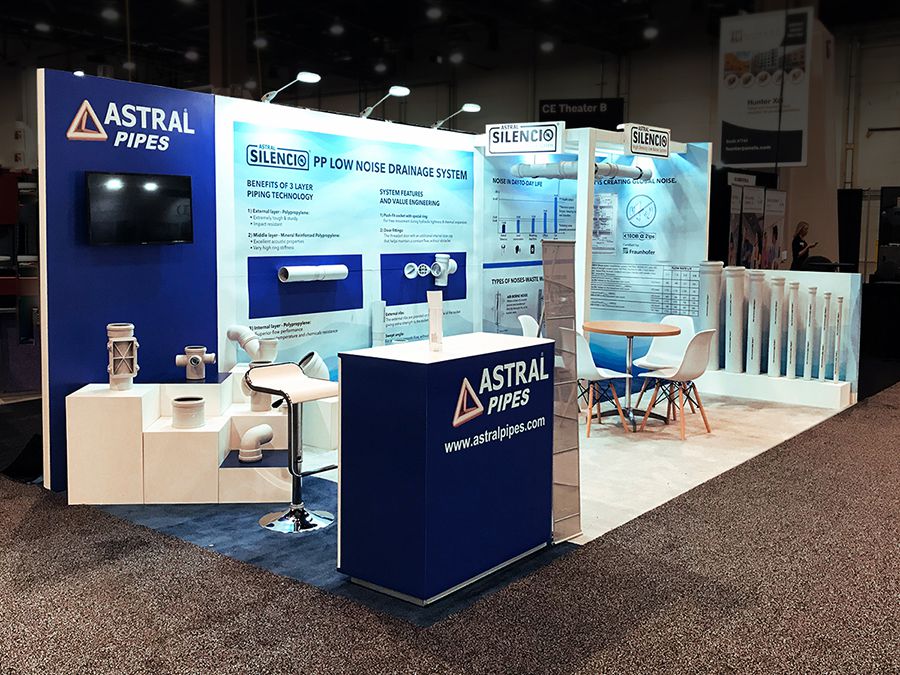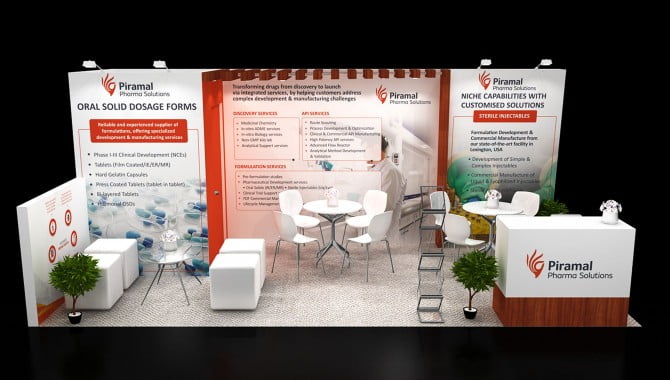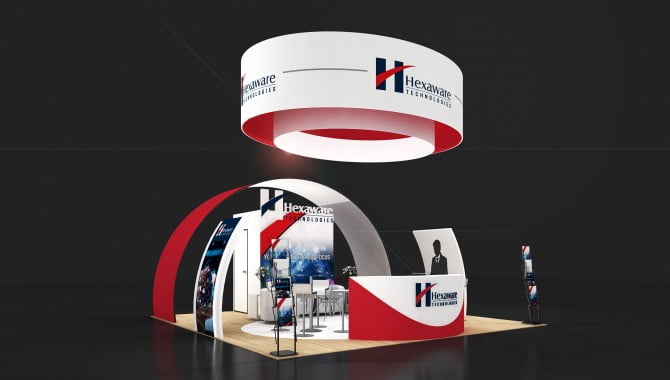How modular displays benefit your business
How modular displays are important when selecting booth display or portable displays
Our Portfolio
BROWSE EXHIBIT RENTALS BY DESIGN
CONTACT US
How modular displays benefit your business
In an era dominated by visual communication, the significance of displays cannot be avoided. From advertising to entertainment, displays serve as the canvas upon which ideas are conveyed to audiences worldwide.
Among the various types of displays available, modular displays have come as a versatile and innovative solution, revolutionizing industries ranging from retail to exhibits.
- Understanding Modular displays
Modular displays represent a dynamic approach to visual communication, characterized by their adaptable and customizable nature.
These displays are constructed from individual modules or panels that can be combined in various ways to create a display of virtually any size or shape. This allows for amazing flexibility, making modular displays an ideal choice for businesses and organizations seeking versatile and visually striking solutions.
- LED Modular displays
One of the most prominent varieties of modular displays is the LED (Light Emitting Diode) display.
LED technology has transformed the display industry, providing vibrant, high-resolution visuals with exceptional brightness and contrast levels. LED modular displays are composed of individual LED panels that can be seamlessly connected to form large, seamless screens.
They find extensive applications in arenas, digital billboards, command centers, and even as large-scale backdrops for concerts and events.
- Video Wall Systems
Video walls represent a specific category of modular displays that use an array of display screens to form a single large-scale display. These screens can be arranged in a grid or other setups to create visually impressive presentations.
Video wall systems are used in various settings, including control rooms, retail spaces, corporate lobbies, and entertainment venues. Their ability to deliver high-quality, dynamic content makes them an important tool for impactful visual communication.
- Tension Fabric Displays
Tension fabric displays provide a lightweight, portable, and cost-effective alternative to traditional rigid panel displays.
These displays feature a frame constructed from lightweight materials such as aluminum, which is then covered with a tensioned fabric graphic.
Tension fabric displays are popular in trade shows, exhibits, and retail environments due to their easy setup, portability, and ability to be customized with vibrant, high-resolution graphics.
- Interactive Modular displays
As technology continues to advance, interactive displays have gained importance in various industries. Interactive modular displays include touch-sensitive technology, allowing users to interact with the content being displayed.
These displays are utilized in settings ranging from retail environments for interactive product presentations to educational institutions for engaging learning experiences. The interactivity of these displays creates a deeper level of engagement and facilitates dynamic, hands-on communication.
- Curved and Curved LED Displays
Curved displays represent a specialized form of modular displays designed to offer an immersive viewing experience. These displays have panels that are curved along a specific axis, creating a wraparound effect.
Curved displays find applications in environments where a panoramic or engaging viewing experience is desired, such as gaming setups, immersive simulations, and high-end retail spaces.
Curved LED displays, in particular, combine the benefits of LED technology with the engaging experience of a curved screen.
Mistakes to Avoid in your Modular displays
Modular displays have become a cornerstone of visual communication, offering businesses and organizations a versatile platform to showcase their products and ideas. However, in the rush to create visually striking displays, it’s easy to overlook certain important details.
- Neglecting Proper Planning and Design
One of the most easily made mistakes in modular display setups is a lack of thorough planning and design. Rushing into the construction phase without a clear vision can lead to costly revisions and subpar results.
It’s important to consider factors such as the target audience, messaging, and the physical space where the display will be installed. A well-thought-out plan ensures that the final display effectively communicates its intended message.
To avoid this mistake, invest time in the initial design phase. Consider consulting with experienced designers or professionals who specialize in modular displays to create a detailed plan that aligns with your objectives.
- Ignoring Brand Consistency
Consistency is key when it comes to branding, and modular displays should be a seamless extension of your brand identity. Neglecting this aspect can result in a disjointed and confusing visual experience for visitors. Elements such as colors, fonts, and logos should be included well into the display design.
To avoid this mistake, provide clear brand guidelines to the design team and ensure that they are followed diligently throughout the construction process.
- Underestimating the Importance of Quality Materials
Choosing good quality materials for a modular display can lead to a host of problems, including structural instability, poor visual quality, and a shorter lifespan. It’s important to invest in high-quality materials that can take the stress of transportation, installation, and repeated use.
To avoid this mistake, work with reputable suppliers and manufacturers who have a track record of producing durable and reliable modular display components. Conduct thorough research and ask for samples before making a final decision.
- Overlooking Accessibility and User Experience
Including interactive elements into modular displays is a powerful way to engage audiences. However, failing to consider accessibility for all users can remove a portion of your audience. Ensure that interactive features are intuitive and easily navigable, and provide alternative options for individuals with disabilities.
To avoid this mistake, conduct user testing to identify any potential accessibility issues and make necessary adjustments before finalizing the display.
- Neglecting Lighting Considerations
Lighting plays an important role in enhancing the visual impact of a modular display. Improper lighting can diminish the effectiveness of even the most well-designed displays. Consider factors such as ambient lighting in the display environment, color temperature, and positioning of lights to ensure optimal visibility.
To avoid this mistake, collaborate with lighting specialists who can provide expert advice on achieving the desired lighting effects for your modular display.
- Overcomplicating the Assembly Process
Modular displays are designed to offer flexibility and ease of setup. Overly complex assembly can lead to frustration and potential errors during installation.
Keep the assembly process as straightforward as possible to ensure a smooth setup, especially in high-stress environments like trade shows and exhibits.
To avoid this mistake, conduct thorough testing of the assembly process and provide clear, detailed instructions for setup. Consider including visual aids or videos to assist with the process.
How to finalize One from many Modular displays
Selecting the right modular display from a multitude of options can be a difficult task. Modular displays, known for their adaptability and versatility, offer a wide range of possibilities for showcasing products, conveying messages, and engaging audiences.
- Define Your Objectives and Audience
Before getting into the array of modular display options, it’s important to have a clear understanding of your goals and target audience. Are you looking to attract potential clients at a trade show, educate visitors at an exhibit, or create an interactive retail experience?
Identifying your specific goals will serve as a compass, guiding you towards the most suitable modular display solution.
- Establish a Budget
Budget considerations are important in narrowing down your options. Modular displays come in a wide range of price points, from cost-effective tension fabric displays to high-end LED video walls.
By establishing a budget early on, you can focus your search on options that align with your financial limits.
While it’s tempting to opt for the most elaborate display, remember that a well-designed display within your budget can be just as effective in conveying your message.
- Consider Your Branding and Message
Your modular display is an extension of your brand identity. It’s important that the display’s design, colors, fonts, and overall aesthetic align with your brand guidelines. Consistency in branding ensures that your display communicates a consistent message and reinforces brand recognition.
Work closely with designers or professionals who specialize in modular displays to integrate your brand elements seamlessly into the display design.
- Evaluate Display Size and Configuration
The size and setup of your modular display should be determined by the available space and the level of visual impact you want to achieve. Consider factors such as the venue’s layout, foot traffic patterns, and any architectural limits. Additionally, think about how the display will interact with the surrounding environment.
- Assess Interactive and Technological Elements
Interactive elements can greatly enhance the engagement level of your modular display. Consider whether including touch screens, augmented reality, or other interactive features aligns with your objectives and audience preferences.
Interactive displays can be particularly effective in providing immersive experiences or gathering customer data.
However, ensure that the technology is interactive and user-friendly to avoid any potential confusion or frustration.
- Prioritize Ease of Assembly and Transport
The ease with which a modular display can be assembled and transported is important, especially if you plan to use it for events or exhibits that require frequent setup and teardown.
Look for displays that come with clear, user-friendly assembly instructions and consider options with lightweight, durable materials for easy transport.
Thoroughly test the assembly process to ensure that it can be executed smoothly, particularly in high-stress environments like trade shows.
- Seek Expert Advice and Testimonials
Gathering insights from industry experts and seeking testimonials from businesses or organizations that have used similar modular displays can provide valuable perspectives. They can offer advice on what worked well for them and what mistakes to avoid.
Additionally, consider reaching out to display manufacturers or suppliers for their recommendations based on your specific requirements and budget.
Modular displays and Marketing Needs
Among the various tools available, modular displays have come as a versatile and impactful medium for visual communication.
This guide explores the modular displays and marketing needs, illustrating how these adaptable structures can be tailored to drive brand awareness, engagement, and ultimately, business growth.
- Creating Memorable Brand Experiences
Modular displays serve as a canvas for brands to create immersive experiences for their audience.
Through strategic design and customization, businesses can convey their brand story, values, and products in a compelling manner. By including elements that relate with the target audience, such as interactive features or captivating visuals, modular displays facilitate a memorable brand encounter that leaves a lasting impression.
- Maximizing Visibility in High-Traffic Environments
Trade shows, exhibits, and industry conferences provide amazing opportunities for businesses to connect with potential customers and industry friends. In these busy environments, standing out is important.
Modular displays offer a dynamic solution, allowing for eye-catching designs that command attention amidst the sea of competitors. Through strategic placement, engaging visuals, and innovative design elements, businesses can ensure that their display becomes a focal point of interest.
- Adapting to Changing Marketing Campaigns
Marketing campaigns evolve over time, reflecting shifts in branding, product services, and messaging. Modular displays, characterized by their adaptable nature, seamlessly accommodate these changes.
Whether introducing a new product line, rebranding, or promoting a specific campaign, businesses can easily update their displays to align with the evolving marketing strategy. This flexibility provides a cost-effective solution, removing the need for entirely new display structures.
- Enhancing Interactivity for Engaging Experiences
Interactive elements in modular displays elevate audience engagement to a new level. Touchscreens, augmented reality, and other interactive features create engaging experiences that captivate visitors.
These dynamic interactions not only hold attention but also provide opportunities for data collection and lead generation. By including technology into modular displays, businesses can create memorable, hands-on experiences that relate with their target audience.
- Targeting Specific Demographics and Markets
Different marketing initiatives may target diverse demographics or markets with different preferences and interests. Modular displays offer the flexibility to tailor visuals and messaging to cater to specific audiences.
Such targeted approach ensures that the display effectively relates with the intended audience, maximizing its impact.
- Measuring and Optimizing Display ROI
Marketing initiatives require a return on investment (ROI) to justify their expense. Modular displays provide measurable metrics to assess their effectiveness. Through methods such as foot traffic analysis, visitor engagement metrics, and lead generation tracking, businesses can quantify the impact of their displays.
These insights enable data-driven decision-making and the ability to optimize future displays for even greater ROI.
Modular displays and Your Budget
Modular displays have emerged as a versatile and dynamic solution for businesses seeking to make a lasting impression.
For many organizations, budget limits can bring up a huge challenge when it comes to investing in these powerful marketing tools. This guide explores the relationship between modular displays and budget limitations, offering insights on how businesses can make informed decisions to achieve maximum impact without overspending.
- Setting Realistic Budgetary Parameters
Before getting into the world of modular displays, it’s important to establish a clear and realistic budget. Understanding the financial parameters within which you are operating will guide your decision-making process.
By setting a well-defined budget from the outset, businesses can ensure that their investment in a modular display aligns with their financial capabilities and marketing goals.
- Prioritizing Key Elements for Maximum Impact
While budget limits may limit certain design options, it’s important to prioritize key elements that will have the most significant impact on your target audience.
Focus on elements such as high-quality graphics, engaging content, and effective branding. These foundational components can create a strong visual presence without requiring excessive expenditure on elaborate features.
Additionally, consider dividing a portion of your budget for interactive elements or technology integration, as these features can greatly enhance audience engagement and provide a unique user experience.
- Exploring Cost-Effective Display Options
Modular displays include a wide range of options to suit various budgets. Tension fabric displays offer a cost-effective solution without compromising on visual impact.
These lightweight, portable displays are customizable and can be a budget-friendly alternative to more complex structures.
Also exploring rental options for modular displays can be a good strategy, especially for businesses with occasional or seasonal marketing needs. Renting provides access to high-quality displays without the high investment and maintenance costs associated with ownership.
Conclusion
The use of modular displays and budget considerations require thoughtful planning and strategic decision-making.
By setting a clear budget, prioritizing impactful elements, exploring cost-effective options, embracing modular flexibility, and comparing suppliers, businesses can maximize the value of their investment in a modular display.
Exhibitrentals know achieving a powerful visual presence doesn’t always necessitate a lot of spending; rather, it involves making informed choices that align with your budgetary limits and marketing goals.
With a well-considered approach, modular displays become not only a visual centerpiece but also a savvy investment in your brand’s success.
How Modular Displays Benefit your Business
The modular display is a stand that can be further divided into smaller components and packed into bundles. These bundles can then be packed into cases and placed into a van or a car.
These exhibits are reusable and flexible, allowing you to configure their displays to fit different exhibition spaces. This saves your money and time.
What Is Modular Stand Design?
Modular display designs have re-usable, flexible, and adaptable properties. This makes them a popular choice for an exhibitor’s series of events! This allows you to reconfigure trade show display materials and graphics to fit various stand spaces.
This means that investing in a modular display will save you money in the long run. Given the nature of their reusability, modular displays also avoids the waste of resources and materials involved in trashing trade booth displays after just one use.
1. Portability of the Stand
Trade show stands that are created using modular displays are more efficient than custom-built designs. The display can be dismantled into smaller components, allowing the structure to be delivered to the site easily as compared to customized stands.
The modular display has a variety of compact, easy to maneuver transport cases. These offer your structures protection and provide professional delivery for your brand.
2. Unique and Innovative
Banner stands as the same as pop-ups but comprises of only a single large trade show graphic supported by a standing frame. Types of stand include motorized scrolling, retractable, cable, tension, and telescoping for indoor and outdoor use. Heavy-duty booths use these to hold LED screens or TVs.
3. Tension Fabric Displays
They tend to draw the attention of visitors, which is beneficial for your brand to stand out in a competitive show. You have the opportunity to experiment with innovative concepts, and come up with something creative and unique.
When you decide to use modular displays, you can something that will wow every attendant.
4. Reusable
Another benefit that comes with the modular displays is the ability to re-use the system again. Compared to customized booth displays that are designed using woods and other materials,you can only use it once, which is not the case with a modular design.
Modular trade show displays can be dismantled quickly while preserving the framework for use in another event. By slightly altering the design, the display can look new. This helps you save on purchasing new stands and redesigning, hence allowing being more environmentally friendly. So, the display can be upgraded without shortage in creative functionality.
5. Eye-Catching Design Options
Modular exhibition displays can be made to seem like a custom trade show exhibit because of different graphic applications. In the shortest time possible, you can create a high impact and visually exciting stands using a modular exhibition framework. Also, these modular stands are small and have interchangeable graphics.
6. Quick and Easy Set-Up
Many businesses do not have a huge workforce that can allow them to build a big stand booth at the exhibition. Therefore, having small portable modular displays is important. In this case, these displays are good for a small team to assemble and install the exhibition display easily and quickly.
The fixing process is simplified with press-fit connectors and simple knobs. It can be assembled easily with the help of an assembly manual or video. Thus, allowing the team to work on other aspects of the trade show booth.
Scalability of a display design
Along with elasticity in modular display design, it is also scalable. Depending on the requisite, the size of modular displays can either be decreased or increased. Any small size modular display can be up-scaled to an average-sized trade show exhibit and vice versa. This allows you to come up with an exhibition display that satisfies your brand needs without incurring the extra cost of purchasing a new one.
7. High Return
The various perks of modular displays like reusability, versatility, longevity, and scalability makes modular trade show displays a one-time purchase. You don’t need to invest in a completely new stand for every show. One modular system can be reconfigured various times ensuring you make most of your investment.
A modular exhibit stand system is very flexible, and can be reconfigured or enlarged to fit different events, sizes, and different stand spaces. When you want a new display, all you have to do is replace the old graphics with a new one.
For more details about modular displays contact us.
CONTACT US
Benefits of exhibit rentals, effective trade show exhibit, trade show exhibit, Trade show display companies, trade show banner design, trade show rentals, Trade show backdrops, Trade booth, trade show booth backdrop, trade show booth design companies, trade show design, trade booth display, exhibit stand design, proficient trade show, exhibit display setups, trade booth displays, portable trade show booth, trade show displays near me, modular displays, custom trade show display, 10x20 trade show booth, pop up displays for trade shows, exhibit stand location, Portable booths, trade show booth walls, portable booth Design, exhibit banners, trade show setup, banner for trade show



























